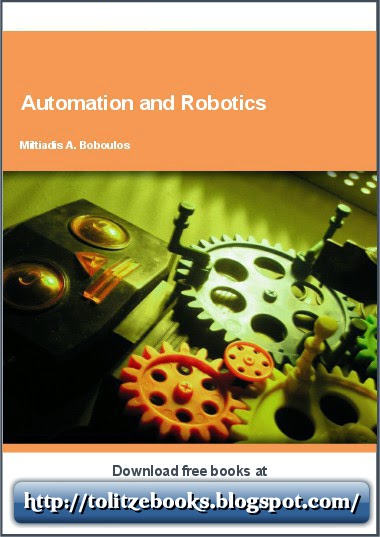Introduction to the American Legal System
Description
Introduction to American Law provides an overview of the legal system in the United States. It is designed for leaners who have little familiarity with U.S. law. Key topics include the federal and state court systems, the civil and criminal litigation processes, and ethics in the legal profession. Each chapter includes a court case study, discussion and review questions, and a practice test with answers.Content
About the AuthorAbout the Contributing Reviewer
- Background of U.S. Law in the United States
- Why Study the Law?
- What is a Law? What is a Legal System?
- The Development of Legal Authority in the United States
- The Declaration of Independence
- The Constitution of the United States
- Summary
- Key Terms
- Chapter Discussion Questions
- Additional Learning Opportunities
- Test Your Learning
- Federal and State Court Systems
- Categories and Classifications of Law
- Overview of the U.S. Court System
- The Federal Court System
- Jurisdiction of the Federal Courts
- The State Court System
- Reading and Understanding a Court Opinion
- Types of Court Opinions
- Summary
- Key Terms
- Chapter Discussion Questions
- Additional Learning Opportunities
- Test Your Learning
- The Civil Litigation Process
- Introduction to Civil Litigation
- Filing the Complaint
- Class Actions
- Discovery Process
- The Pre-Trial Process
- Alternative Dispute Resolution
- The Trial
- Jury Instructions
- The Appellate Process
- Summary
- Key Terms
- Chapter Discussion Questions
- Additional Learning Opportunities
- The Criminal Trial Process
- Introduction to Criminal Law
- Jurisdiction over Crimes
- Classifications of Crime
- Elements of a Crime
- Types of Crimes
- Defenses to Criminal Liability
- Arrest and Interrogation
- The Pre-Trial Process
- The Criminal Trial
- Sentencing
- Summary
- Key Terms
- Chapter Discussion Questions
- Ethical Considerations
- Additional Learning Opportunities
- Test Your Learning
- Ethics and the Legal Professional
- The Legal Professional
- Model Rules of Professional Conduct
- Attorney-Client Relationship
- The Attorney Advocate
- Unauthorized Practice of Law (UPL)
- Advertising and Solicitation of Clients
- The Discipline Process
- Summary
- Key Terms
- Chapter Discussion Questions
- Additional Learning Opportunities
- Appendix A
- Test Your Learning
- Appendix B
- The Constitution of the United States
- Appendix C
- The Constitution: Amendments 11–27
- Endnotes
About the Author
Konnie Kustron is a professor in the Paralegal Studies Program in the School of Technology Studies at Eastern Michigan University in Ypsilanti, Michigan.Professor Kustron received her B.S. with honors in pre-law from Michigan State University, and her J.D. from the Michigan State College of Law. She is a member of the Michigan Bar and approved as a VA attorney with U.S. Department of Veteran's Affairs. Mrs. Kustron is the recipient of an Eastern Michigan University Alumni Teaching Award and a Dean’s Outstanding Faculty Award. She is a chapter author in the Internet Guide for Michigan Lawyers, which has been a winner of the "Award of Excellence in the Best Publication" category given by the Association for Continuing Legal Education. Professor Kustron is also contributor to the Encyclopedia of Mathematics and Society (Salem Press, 2011), described as the "Best Reference 2011," by the Library Journal (which is the leading reviewer of library materials in the United States.)
Professor Kustron's areas of specialization include business law, and technology and the law.
<style type="text/css">
@import url(//www.google.com/cse/api/branding.css);
</style>
<div class="cse-branding-bottom" style="background-color:#FFFFFF;color:#000000">
<div class="cse-branding-form">
<form action="http://www.google.com" id="cse-search-box" target="_blank">
<div>
<input type="hidden" name="cx" value="partner-pub-1911017638318591:3751340866" />
<input type="hidden" name="ie" value="UTF-8" />
<input type="text" name="q" size="55" />
<input type="submit" name="sa" value="Search" />
</div>
</form>
<script type="text/javascript" src="http://www.google.com/jsapi"></script>
<script type="text/javascript">google.load("elements", "1", {packages: "transliteration"});</script>
<script type="text/javascript" src="http://www.google.com/cse/t13n?form=cse-search-box&t13n_langs=en%2Ckn%2Cfa%2Csr%2Cti%2Csa%2Cne%2Chi%2Car%2Cam%2Cel%2Cml%2Cpa%2Cta%2Cte%2Cru%2Cur%2Cmr%2Cgu"></script>
</div>
<div class="cse-branding-logo">
<img src="http://www.google.com/images/poweredby_transparent/poweredby_FFFFFF.gif" alt="Google" />
</div>
<div class="cse-branding-text">
Custom Search
</div>
</div>
Show
0 Comments
prev





















